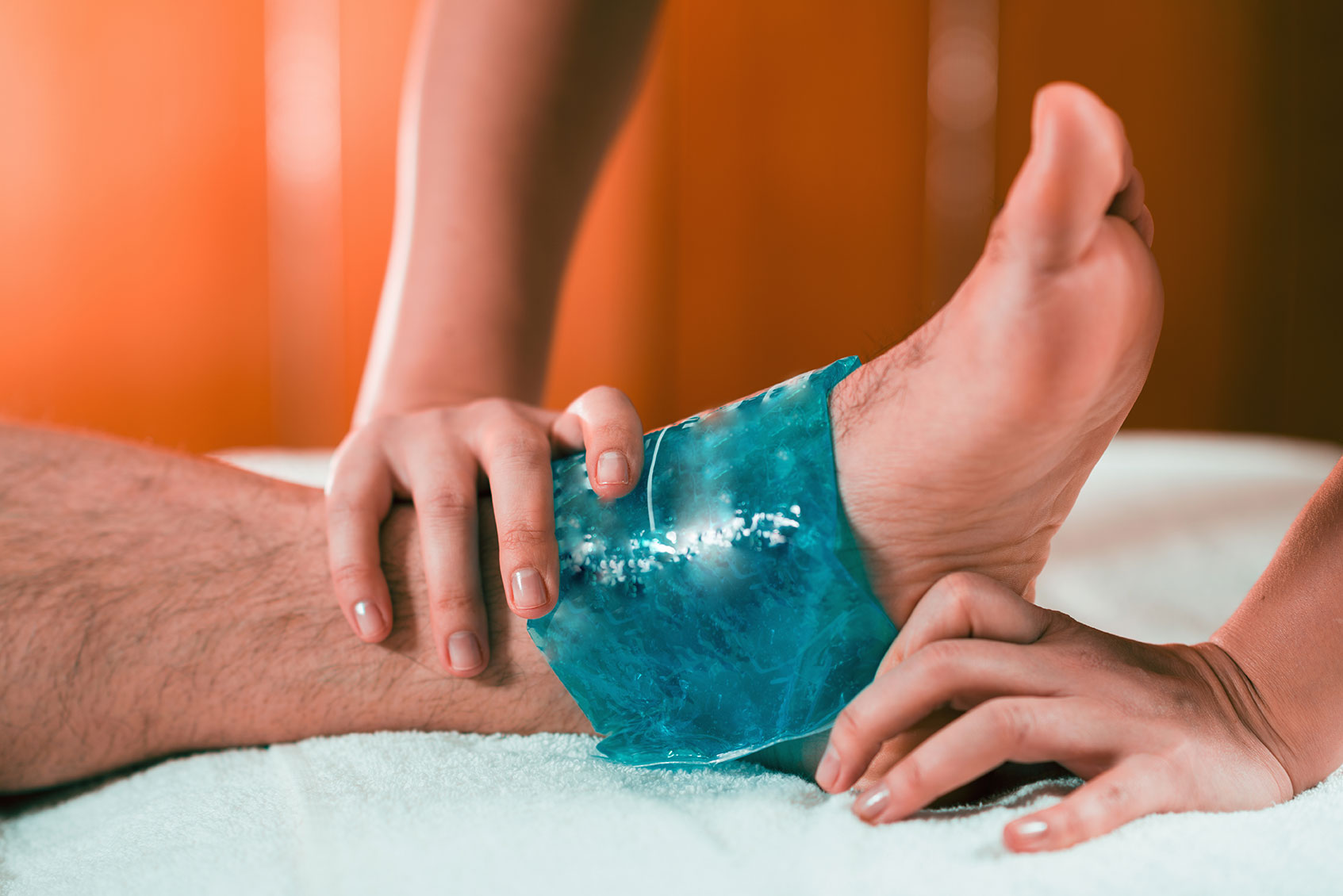A bit of history on the use of ice
The recommendation to put ice on an injury has made its way into the treatment of damage to soft tissues (ligaments, tendons, muscles, etc.) for quite some time. The famous sprained ankle is a perfect example to put things into context. In fact, it was since approximately 1978 when Dr. Gabe Mirkin first introduced the acronym RICE, which stands for Rest, Ice, Compression, and Elevation. The ice was intended to have the effect of reducing pain, inflammation, and swelling, and also help with healing. Does putting ice on an injury really provide all these benefits? Let’s dive deeper…
If we go back a little further in time, in the 1940s, the medical world used ice to reduce infection, pain, and death during major surgical operations, such as amputations (1). Over time, ice has become a tool for the management of all kinds of injuries, initially in the athletic field using the concept of RICE (2), but later by the medical world as a basic treatment for acute injuries.
Another interesting historical fact, which few people know: Dr. Mirkin himself later claimed that recent studies seemed to show that “his RICE”, ice in particular, would not have as many effects as we attributed to it, and that it may even slow down the normal soft tissue healing processes (3).
What does science say today?
Favorable effects on pain: There seems to be a fairly good scientific and clinical consensus that ice indeed allows a reduction in pain, more precisely a reduction in the perception of it (4). However, this is not necessarily a sign that there will be better healing of the injury. However, it must be understood that healing is not just biological, but a complex biopsychosocial process. Therefore, good pain management will inevitably help you get through the stages. The bottom line is that using ice isn’t the best way to reduce pain, especially if it’s used too much.
Adverse effect on inflammation: Inflammation is part of the healing process of an injury. It is a necessary mechanism that allows the body to send healing mediators, for example, neutrophils (white blood cells) to eliminate bacteria in open wounds, or macrophages that will remove cells damaged by the wound itself. If you slow down inflammation from the start, you slow down the arrival of these precious molecules and you reduce the quality of stages 2 and 3 of healing, namely those of healing/fibroblasts and remodeling. A 2011 study demonstrated several very interesting facts that support this (5). Notably, within 28 days of injury, participants who had not used ice had around 65% higher regenerated muscle tissue. The problem related to ice would be attributable to its effect on the constriction of the vessels thus reducing the supply of healing mediators to the site of the injury.
Unfavorable effect on the reduction of swelling: It has been well demonstrated that excessive swelling will interfere with the healing of the injury in particular because it will have the effect of increasing the pain even more, reducing the ability to move, and therefore, slowing down the rate of healing. On the other hand, swelling is also a normal process during an injury and is necessary for healing. In fact, swelling is simply the accumulation of fluid filled with necessary inflammatory cells and also other damaged tissue cells that will eventually have to leave the site of injury via the lymphatic system. The latter is passive; it is dependent on movement to function. Ice does not facilitate the evacuation of the fluid, movement does.
Movement as the main ally for healing
Finally, the experts (6) who have studied this question seem to agree on certain points.
There is not enough data to clearly establish the effectiveness of ice and RICE in the treatment of this type of injury, other than reducing the perception of pain.
A treatment plan should be individualized and rehabilitation through movement should be done as soon as possible, as it is the best tool for optimal healing.
References
(1) F.M. Massie, « Refrigeration anesthesia for amputation », Annals of Surgery 123, no. 5 (1946): 937-47.
(2) G. Mirkin and M. Hoffman, The Sport Medecine book (Boston: Little Brown & Co., 1978).
(3) G. Reinl, Iced! The Illusionnary Treatment Option, 2nd Edition (Henderson, NV: Gary Reinl, 2014).
(4) Bleakley C, McDonough S, MacAuley D. The use of ice in the treatment of acute soft-tissue injury: a systematic review of randomized controlled trials. Am J Sports Med. 2004 Jan-Feb;32(1):251-61. doi: 10.1177/0363546503260757. PMID: 14754753.
(5) Takagi R, Fujita N, Arakawa T, Kawada S, Ishii N, Miki A. Influence of icing on muscle regeneration after crush injury to skeletal muscles in rats. J Appl Physiol (1985). 2011 Feb;110(2):382-8. doi: 10.1152/japplphysiol.01187.2010. Epub 2010 Dec 16. PMID: 21164157.
(6) Kaminski TW, Hertel J, Amendola N, et al. National Athletic Trainer’s Association position statement: conservative management and preventing ankle sprains in athletes. J Athl Train. 2013;48:528-545
Collins NC. Is ice right? Does cryotherapy improve outcome for acute soft tissue injury? Emergency Medicine Journal 2008;25:65-68.
Van den Bekerom MP, Struijs PA, Blankevoort L, Welling L, van Dijk CN, Kerkhoffs GM. What is the evidence for rest, ice, compression, and elevation therapy in the treatment of ankle sprains in adults? J Athl Train. 2012 Jul-Aug;47(4):435-43. doi: 10.4085/1062-6050-47.4.14. PMID: 22889660; PMCID: PMC3396304.
Kaminski TW, Hertel J, Amendola N, et al. National Athletic Trainer’s Association position statement: conservative management and preventing ankle sprains in athletes. J Athl Train. 2013;48:528-545






